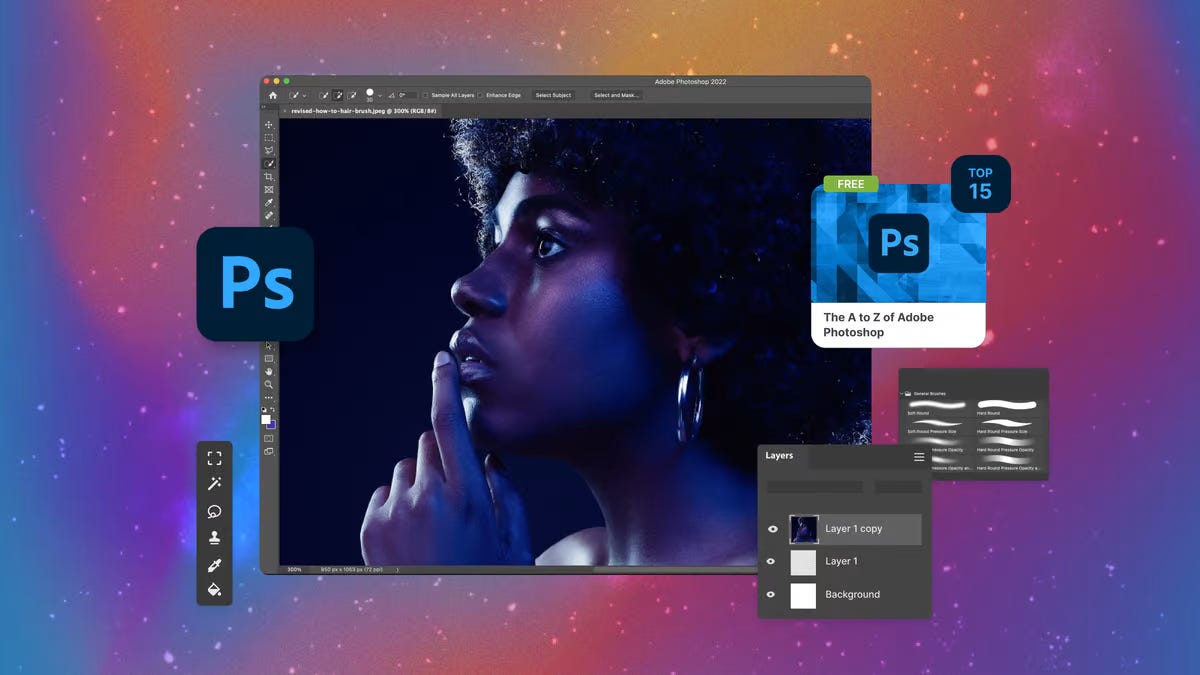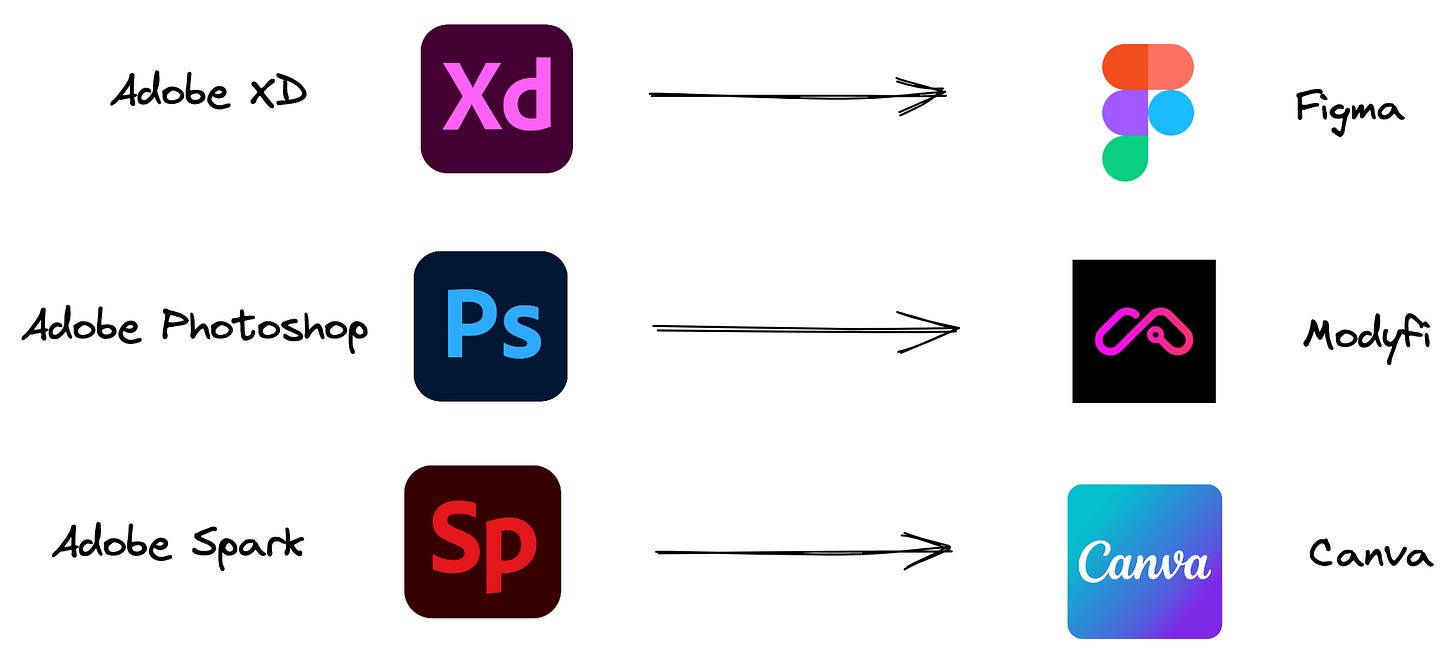Okay…I was joking. Photoshop isn’t dead. It’s very much alive but it sucks. Let me explain why.
An important fact to remember when evaluating great founders and their ideas is that the creation of new, innovative software is rarely developed and executed by the incumbents or insiders - it executed by the outsiders.
Adobe (an incumbent in its own right) has a long history of building products, tools, and services that serve a generous range of users. They’ve long dominated the era of design by arming the modern day designer/creator with the tools needed to express themselves and create beautiful content. For some, Adobe’s suite of design tools have served as a natural extension of the creator. However, as we enter into a new era of creation and design it’s important that the tools we use to recreate the world around us, is a reflection of the modern day workflow, that of collaboration & community.

Adobe Photoshop has been on the market for 30+ years. However, there hasn’t been much innovation in the recent decade. Although Photoshop offers a wide variety of features and functionality, it can be seen as quite a steep learning curve for some newbies to navigate its user interface. When I first got into photography, I thought all I needed to do was to pick up a nice camera and with the right lens I could capture beautiful images like the ones I saw done by professionals (i.e point & shoot). However, I learned rather quickly, that was far from the reality. Although the images I would capture were beautiful, they didn’t feel alive to me. What I saw with my own eyes wasn’t exactly what the camera captured. That’s where post-editing came in and worked it’s magic. To get up to speed, I spent countless hours watching tutorial videos on how to use Photoshop and Lightroom. Not to mention, the software was desktop-bound and took up a ton of memory on my laptop. What initially seemed like a fun, new hobby, had sadly turned into a nightmare. Unsurprisingly, this nightmare is not completely uncommon.
Adobe is not an accurate representation of the future of work. Although its editing tools are super-powerful, in the end, the result of your work is reduced to a binary file (JPEG), that is stored locally on your computer or on a network drive. For another person to see that file, one has to either email it or send over something like Slack. Two people aren’t able to look at the same file at the same time. There’s no version control. You end up with files named as ‘v1’, ‘v2’,...’v5’, etc. It wasn’t until 2021, did Adobe unveil its plans to transition away from Desktop-as-a-service to now Subscription-as-a-Service (SaaS) model. When Adobe Creative Cloud launched, like everyone else, I believed that they had finally seen the light. The new era of cloud and SaaS had finally seeped into its product vision. However, Adobe Creative cloud is not cloud nor SaaS. In order to use it, you still have to download a large client/app (12GB) to your desktop to use it. I think it would be insult to call that true ‘SaaS’.
Adobe can’t ignore what’s coming. There’s a new wave of consumers who simply want easy-to-use design software that is collaborative and cloud-based. Figma and Canva are prime examples of the unbundling that’s happening in the market today (*Adobe to acquire Figma*).
We are living in a time where anyone can be a content creator. The creator economy market is currently estimated to be $104 billion. Content creation is no longer confined within the realm of the full-time professional. People care about the stuff they put out into the world. The ability to design images that the world interacts with daily (Instagram, Youtube, Tiktok, etc.) is no longer an afterthought.
I’m excited to invest in companies building the tools & infra needed to arm the next generation of content creation.
Keep an 👁️ out for these awesome companies I’ve backed → Editframe, Modyfi :)





